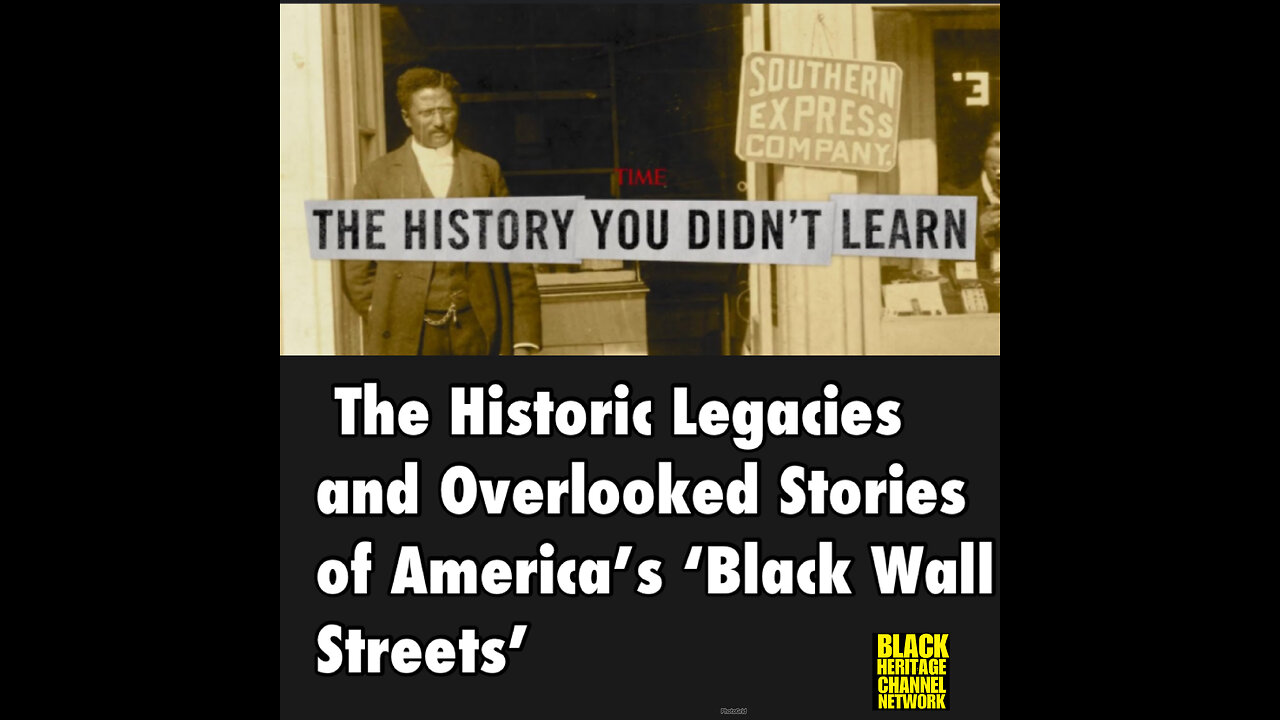Premium Only Content

BHCC #11 The Historic Legacies and Overlooked Stories of America’s ‘Black Wall Streets’
BHCC #11
The Historic Legacies and Overlooked Stories of America’s ‘Black Wall Streets’
Between May 31 and June 1, 1921, as many as 300 people were killed in one of the deadliest race massacres in U.S. history. Riled up by rumors of a Black man raping a young white woman, a white mob burned down the Tulsa, Okla., neighborhood of Greenwood—a.k.a. “Black Wall Street,” the affluent commercial and residential neighborhood founded in the city by Black Americans who went west after the Civil War.
Now, 100 years after the 1921 Tulsa race massacre, awareness of this American tragedy has grown thanks to the work of activists and descendants of victims, local political support, and depictions in the HBO series Watchman and Lovecraft Country. But Tulsa’s was not the only Black Wall Street. The history of other such districts nationwide is still not widely known beyond their home cities, though they were many: Bronzeville in Chicago; Hayti in Durham, N.C.; Sweet Auburn in Atlanta; West Ninth Street in Little Rock, Ark.; and Farish Street in Jackson, Miss.
-
 LIVE
LIVE
Fresh and Fit
4 hours agoDruski Response, Nick Fuentes DETAILS Assassination Attempt, Tate W, & MORE!
9,633 watching -
 4:13:32
4:13:32
Nerdrotic
7 hours ago $5.46 earnedSUPERMAN Drops, Disney Cuts WOKENESS? Hollywood DEI is DEAD | Friday Night Tights 333 Little Platoon
111K34 -
 LIVE
LIVE
Talk Nerdy 2 Us
4 hours agoSpecial Guest - Next UFC Superstar - Dani Aleksovska
446 watching -
 DVR
DVR
Man in America
6 hours agoThe Elites Are Losing Their War on Our Children w/ Robert Bortins
6.05K -
 LIVE
LIVE
I_Came_With_Fire_Podcast
8 hours agoGovt' Shutdowns, VA Scandals, MORE Drones, Syrian Strikes and staged rescues , and The DHS!
829 watching -
 56:55
56:55
The StoneZONE with Roger Stone
4 hours agoTrump Should Sue Billionaire Governor JB Pritzker for Calling Him a Rapist | The StoneZONE
21.5K3 -
 59:21
59:21
Adam Does Movies
3 hours ago $0.66 earnedMore Reboots + A Good Netflix Movie + Disney Live-Action Rant - LIVE
15.9K -
 36:28
36:28
TheTapeLibrary
13 hours ago $0.44 earnedThe Disturbing True Horror of the Hexham Heads
45.1K4 -
 LIVE
LIVE
JdaDelete
23 hours ago $0.15 earnedHalo MCC with the Rumble Spartans 💥
397 watching -
 LIVE
LIVE
Edge of Wonder
7 hours agoChristmas Mandela Effects, UFO Drone Updates & Holiday Government Shake-Ups
421 watching